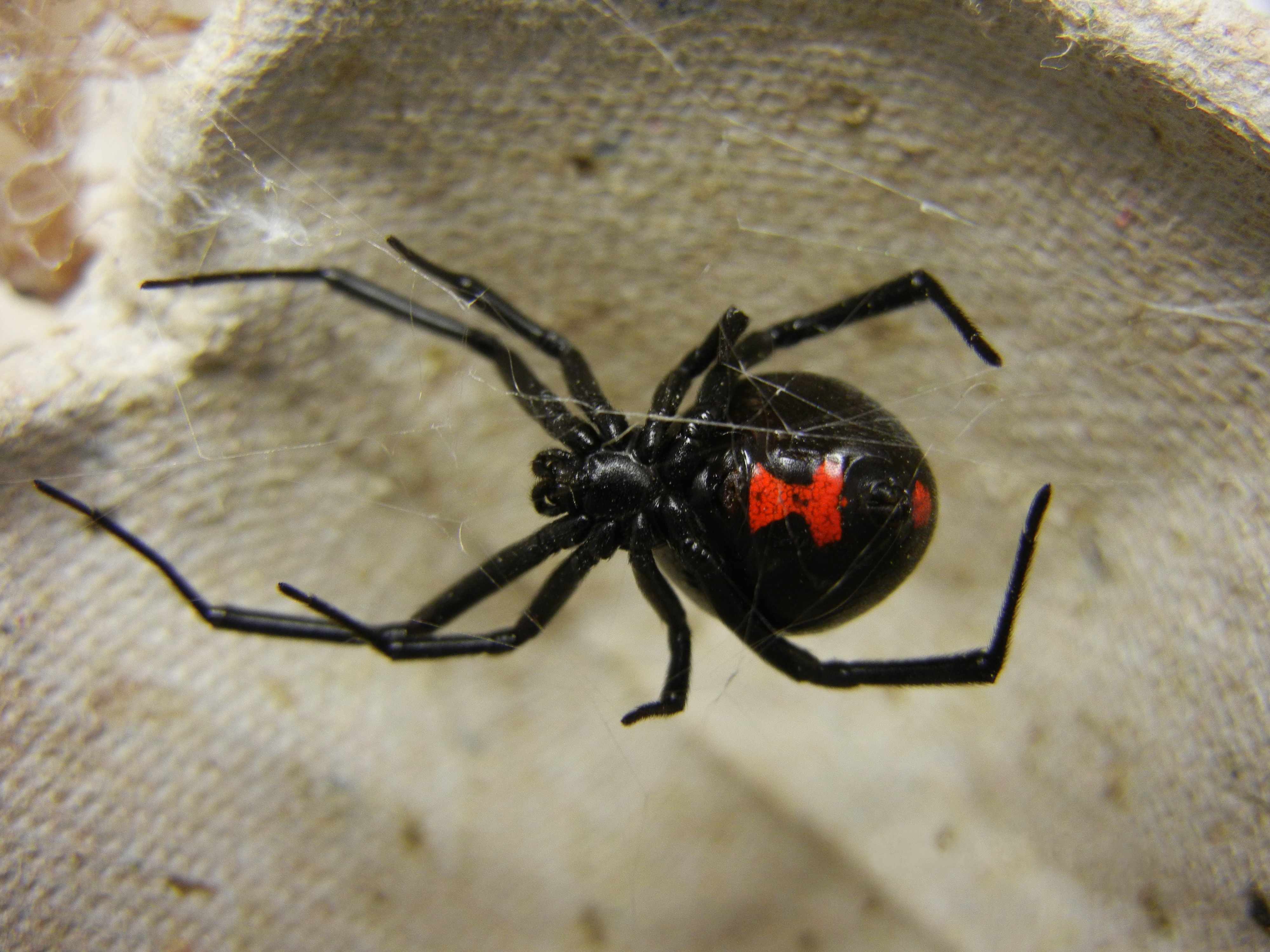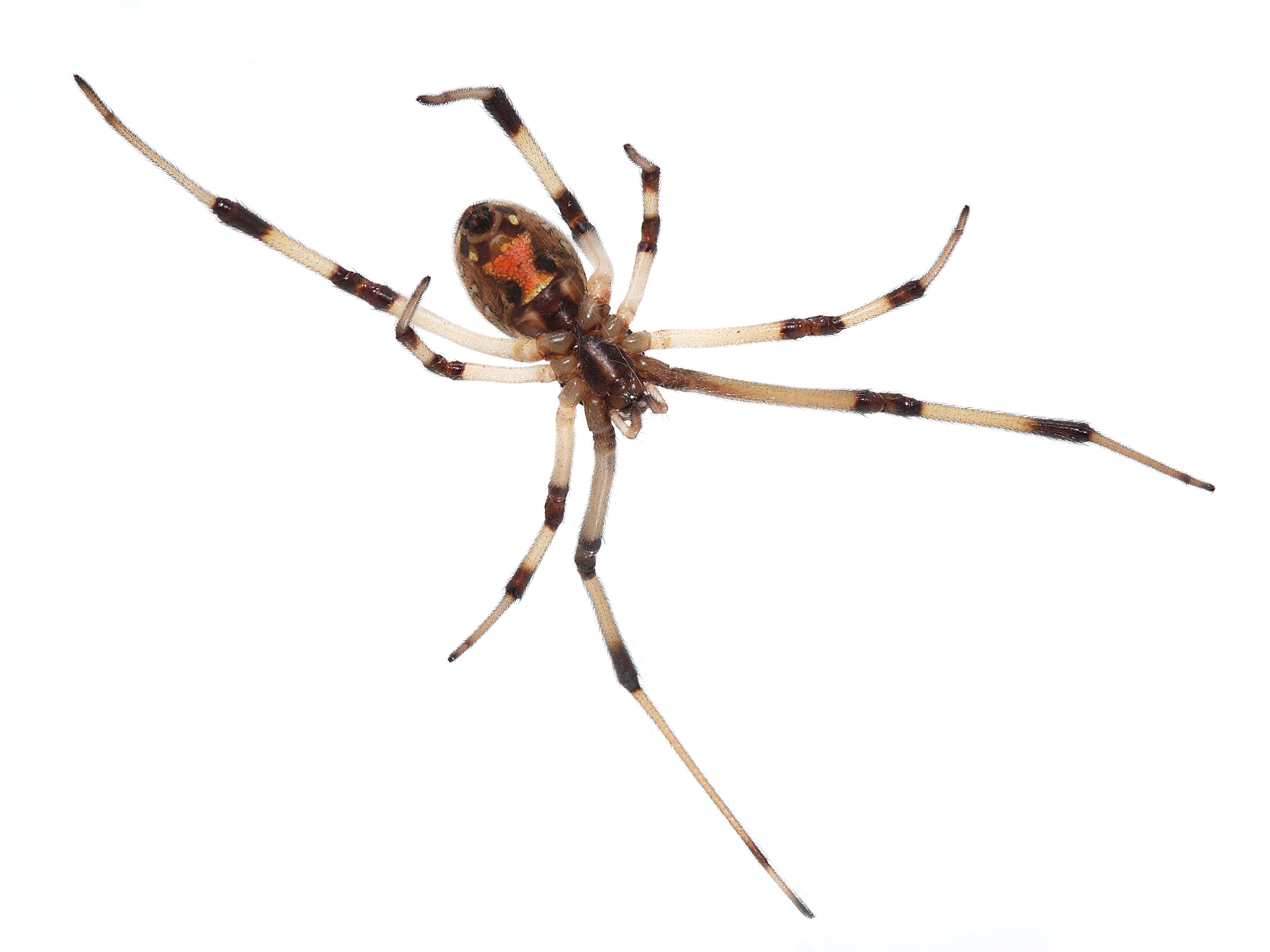|
Widow Spider
''Latrodectus'' is a broadly distributed genus of spiders with several species that are commonly known as the true widows. This group is composed of those often loosely called black widow spiders, brown widow spiders, and similar spiders. However, the diversity of species is much greater. A member of the family Theridiidae, this genus contains 34 species, which include several North American "black widows" (southern Black Widow ''Latrodectus mactans'', western black widow ''Latrodectus hesperus'', and northern black widow ''Latrodectus variolus''). Besides these, North America also has the red widow ''Latrodectus bishopi'' and the brown widow ''Latrodectus geometricus'', which, in addition to North America, has a much wider geographic distribution. Elsewhere, others include the European black widow (''Latrodectus tredecimguttatus''), the Australian redback spider (''Latrodectus hasseltii'') and the closely related New Zealand katipō (''Latrodectus katipo''), several different spe ... [...More Info...] [...Related Items...] OR: [Wikipedia] [Google] [Baidu] [Amazon] |
Latrodectus Mactans
''Latrodectus mactans'', known as southern black widow or simply black widow, and the shoe-button spider, is a venomous species of spider in the genus ''Latrodectus''. The females are well known for their distinctive black and red coloring and for the fact that they will occasionally eat their mates after reproduction. The species is native to North America. The venom can cause pain and other symptoms, but is rarely fatal to healthy humans. Taxonomy ''Latrodectus mactans'' was first described by Johan Christian Fabricius in 1775, placing it in the genus '' Aranea''. It was transferred to the genus ''Latrodectus'' in 1837 by Charles Walckenaer and is currently placed in the family Theridiidae of the order Araneae. The species is closely related to ''Latrodectus hesperus'' (western black widow) and ''Latrodectus variolus'' (northern black widow). Members of the three species are often confused with the genus '' Steatoda'', the false widows. Prior to 1970, when the current taxonom ... [...More Info...] [...Related Items...] OR: [Wikipedia] [Google] [Baidu] [Amazon] |
Latrodectus Geometricus
''Latrodectus geometricus'', commonly known as the brown widow, brown button spider, grey widow, brown black widow, house button spider or geometric button spider, is one of the widow spiders in the genus ''Latrodectus''. As such, it is a 'cousin' to the more infamous ''Latrodectus mactans'' (black widow). ''L. geometricus'' has black and white patterns on the sides of its abdomen as well as an orange-yellow colored hourglass shape marking. Their eggs are easily identified by points that project from all over the egg sacs. ''L. geometricus'' are found all over the world, but are believed to originate in Africa or South America. Their bites, though painful, are not considered to be dangerous. Taxonomy ''L. geometricus'' derives its name from the geometric patterning on its abdomen. However, the spider's coloring can and does darken over time and the pattern may become obscured. Similar widows include the ''L. rhodesiensis'', a brown-colored relative of ''L. geometricus'' wh ... [...More Info...] [...Related Items...] OR: [Wikipedia] [Google] [Baidu] [Amazon] |
Latrodectism
Latrodectism () is the illness caused by the bite of ''Latrodectus'' spiders (the black widow spider and related species). Pain, muscle rigidity, vomiting, and sweating are the symptoms of latrodectism. There are several spider species all named black widow: southern black widow spider (''L. mactans''), the European black widow (''L. tredecimguttatus''), Western black widow spider (''L. hesperus''), Northern black widow spider (''L. variolus''). Other ''Latrodectus'' that cause latrodectism are the Australian redback spider (''L. hasselti''), the New Zealand katipō spider (''L. katipo'') and the South American '' Latrodectus corallinus'' and ''Latrodectus curacaviensis''. Several other members of the genus ''Latrodectus'' are not commonly associated with latrodectism, including the cosmopolitan brown widow (''L. geometricus''). Signs and symptoms Symptoms of a bite depend on the amount of venom injected. A bite of ''Latrodectus'' may not ... [...More Info...] [...Related Items...] OR: [Wikipedia] [Google] [Baidu] [Amazon] |
Spider Bite
A spider bite, also known as arachnidism, is an injury resulting from the bite of a spider. The effects of most bites are not serious. Most bites result in mild symptoms around the area of the bite. Rarely they may produce a necrotic skin wound or severe pain. Most spiders do not cause bites that are of importance. For a bite to be significant, substantial envenomation is required. Bites from the Latrodectus, widow spiders involve a neurotoxic venom which produces a condition known as latrodectism. Symptoms may include pain which may be at the bite or involve the chest and abdomen, sweating, muscle cramps and vomiting among others. Bites from the recluse spiders cause the condition loxoscelism, in which local necrosis of the surrounding skin and widespread hemolysis, breakdown of red blood cells may occur. Headaches, vomiting and a mild fever may also occur. Other spiders that can cause significant bites include the Australian funnel-web spider and Phoneutria fera, South Ameri ... [...More Info...] [...Related Items...] OR: [Wikipedia] [Google] [Baidu] [Amazon] |
Latrodectus Bishopi
''Latrodectus bishopi'' is the scientific name for the red widow spider, which is endemic to the Florida scrub habitat of central and southern Florida, where it lives primarily in sand dunes dominated by sand pine, '' Pinus clausa'' – a type of vegetation found only in Florida and coastal Alabama. Description The red widow, ''L. bishopi'', has a red-orange cephalothorax, its abdomen is black with yellow rings outlining the rows of red spots and its legs are vermillion red. On its underside, it does not have the familiar hourglass marking and instead usually has one or two small red marks. Females are almost double the size of the male. Taxonomy The species was first described in 1938 by B. J. Kaston as the variety ''bishopi'' of the species ''Latrodectus mactans''. The name ''bishopi'' honors Marshall B. Bishop who collected the specimens on which the description was based. ''Latrodectus bishopi'' was raised to a full species in 1964 by John D. McCrone and Herbert W. Levi. ... [...More Info...] [...Related Items...] OR: [Wikipedia] [Google] [Baidu] [Amazon] |
Latrodectus Hesperus
''Latrodectus hesperus'', the western black widow spider or western widow, is a venomous spider species found in western regions of North America. The female's body is 14–16 mm (1/2 in) in length and is black, often with an hourglass-shaped red mark on the lower abdomen. This "hourglass" mark can be red, yellow, and on rare occasions, white. The male of the species is around half this length and generally a tan color with lighter striping on the abdomen. The population was previously described as a subspecies of ''Latrodectus mactans'' and it is closely related to the northern species ''Latrodectus variolus''. The species, as with others of the genus, build irregular or "messy" webs: unlike the spiral webs or the tunnel-shaped webs of other spiders, the strands of a ''Latrodectus'' web have no apparent organization. Female black widows have potent venom containing a neurotoxin active against a range of mammals (see latrodectism). In humans, symptoms of this venom include pa ... [...More Info...] [...Related Items...] OR: [Wikipedia] [Google] [Baidu] [Amazon] |
Latrotoxin
A latrotoxin is a high-molecular mass neurotoxin found in the venom of spiders of the genus ''Latrodectus'' (widow spiders) as well as at least one species of another genus in the same family, '' Steatoda nobilis''. Latrotoxins are the main active components of the venom and are responsible for the symptoms of latrodectism. The following latrotoxins have been described: five insecticidal toxins, termed α, β, γ, δ and ε-latroinsectotoxins, one vertebrate-specific neurotoxin, alpha-latrotoxin, and one toxin affecting crustaceans, α-latrocrustatoxin. α-latrotoxin The best-studied latrotoxin is alpha-latrotoxin, which acts presynaptically to release neurotransmitters (including acetylcholine) from sensory and motor neurons, as well as on endocrine cells (to release insulin, for example). It is a ~130 kDa protein that exists mainly in its dimerized or tetramerized forms. α-latrotoxin (α-LTX) can naturally be found in widow spiders of the genus ''Latrodectus''. The most ... [...More Info...] [...Related Items...] OR: [Wikipedia] [Google] [Baidu] [Amazon] |
Latrodectus Eye Group
''Latrodectus'' is a broadly distributed genus of spiders with several species that are commonly known as the true widows. This group is composed of those often loosely called black widow spiders, brown widow spiders, and similar spiders. However, the diversity of species is much greater. A member of the family Theridiidae, this genus contains 34 species, which include several North American "black widows" (southern Black Widow ''Latrodectus mactans'', western black widow ''Latrodectus hesperus'', and northern black widow ''Latrodectus variolus''). Besides these, North America also has the red widow '' Latrodectus bishopi'' and the brown widow ''Latrodectus geometricus'', which, in addition to North America, has a much wider geographic distribution. Elsewhere, others include the European black widow ('' Latrodectus tredecimguttatus''), the Australian redback spider (''Latrodectus hasseltii'') and the closely related New Zealand katipō (''Latrodectus katipo''), several different ... [...More Info...] [...Related Items...] OR: [Wikipedia] [Google] [Baidu] [Amazon] |
Anatomical Terms Of Location
Standard anatomical terms of location are used to describe unambiguously the anatomy of humans and other animals. The terms, typically derived from Latin or Greek roots, describe something in its standard anatomical position. This position provides a definition of what is at the front ("anterior"), behind ("posterior") and so on. As part of defining and describing terms, the body is described through the use of anatomical planes and axes. The meaning of terms that are used can change depending on whether a vertebrate is a biped or a quadruped, due to the difference in the neuraxis, or if an invertebrate is a non-bilaterian. A non-bilaterian has no anterior or posterior surface for example but can still have a descriptor used such as proximal or distal in relation to a body part that is nearest to, or furthest from its middle. International organisations have determined vocabularies that are often used as standards for subdisciplines of anatomy. For example, '' Termi ... [...More Info...] [...Related Items...] OR: [Wikipedia] [Google] [Baidu] [Amazon] |
Hourglass
An hourglass (or sandglass, sand timer, or sand clock) is a device used to measure the passage of time. It comprises two glass bulbs connected vertically by a narrow neck that allows a regulated flow of a substance (historically sand) from the upper bulb to the lower one due to gravity. Typically, the upper and lower bulbs are symmetric as they are usually manufactured by pinching a tube. The specific duration of time a given hourglass measures is determined by factors including the quantity and coarseness of the particulate matter and the neck width. Depictions of an hourglass as a symbol of the passage of time are found in art, especially on tombstones or other monuments, from antiquity to the present day. The form of a winged hourglass has been used as a literal depiction of the Latin phrase ("time flies"). History Antiquity The origin of the hourglass is unclear. Its predecessor the ''clepsydra'', or water clock, is known to have existed in Babylon and Egypt as early ... [...More Info...] [...Related Items...] OR: [Wikipedia] [Google] [Baidu] [Amazon] |
Sexual Cannibalism
Sexual cannibalism is when an animal, usually the female, Cannibalism, cannibalizes its mate prior to, during, or after Copulation (zoology), copulation. This trait is observed in many arachnid orders, several insect and crustacean clades, Gastropoda, gastropods, and some snake species. Several hypotheses to explain this seemingly paradoxical behavior have been proposed, including the adaptive foraging hypothesis, aggressive spillover hypothesis and mistaken identity hypothesis. This behavior is believed to have evolved as a manifestation of sexual conflict, occurring when the reproductive interests of males and females differ. In many species that exhibit sexual cannibalism, the female consumes the male upon detection. Females of cannibalistic species are generally hostile and unwilling to mate; thus many males of these species have developed adaptive behaviors to counteract female aggression. Prevalence Sexual cannibalism occurs among insects, arachnids and Amphipoda, amphipods. ... [...More Info...] [...Related Items...] OR: [Wikipedia] [Google] [Baidu] [Amazon] |






